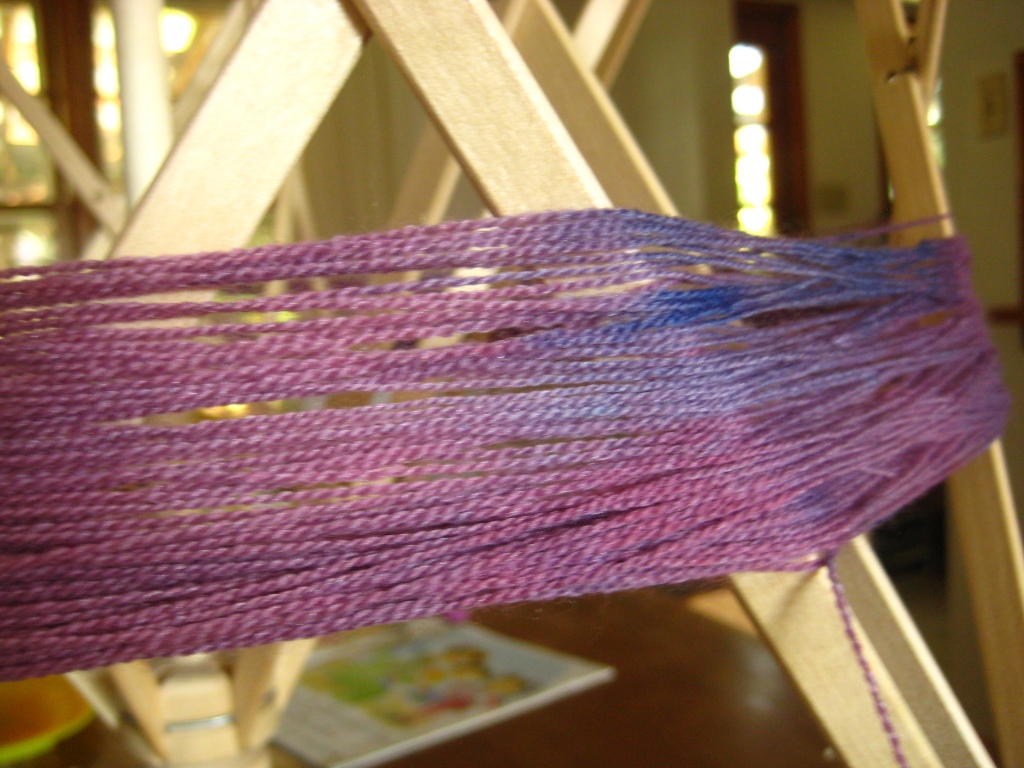With great beauty comes… great danger? Great sacrifice? We all know that laceweight yarns are beautiful — there’s something inherent in its delicacy, and the luxury of its fibers, and the way it soaks up colour. Laceweight is beautiful.
And dangerous, as I recently found out. But sacrifice? The beauty of laceweight requires sacrifice? Not for you, dear readers, but it does for me. Let’s talk about my arms.
My arms are going to fall off. They ache, they’re sore. And as much as my eyes love laceweight, my arms hate it. At 1300 wonderful, delicate, luxurious yards per 100g, it takes a loooooong time to reskein. I have to sit and turn that skein winder round and round and round and round…
When the dyed skein goes on the swift, it really doesn’t look much different from any other skein. My arms are blissfully ignorant of what’s about to happen.
.
But after a few minutes of winding, when my arm is expecting the job to be half done, I look and find there’s only wee bit of yarn on the skein winder…
.
And so I keep winding. Round and round and round and round…
.
And after what seems like forever, I look up and…
.the swift looks as full as it ever was! HOW can that be?!?
My arms are not happy with me. My arms are burning and fed up and ready to quit. It takes some convincing to get them to keep going.
.
But after a long, long time, the skein winder starts to look lovely and full like this…
.
And the swift finally starts to look a bit emptier…!
.
And then just as my arms get to the point where they are ready to fall right off, we reach the end.
.
And then it’s done. And it’s gorgeous. And I hold the finished skein in my hand and look at how all the colours blend together gently and I am in love! Laceweight is worth it, I tell myself.
.
Until I lay that skein aside, and pick up the next one and start to arrange it on the swift and my arms realise what’s happening… and they don’t like it. They don’t like it one bit.









